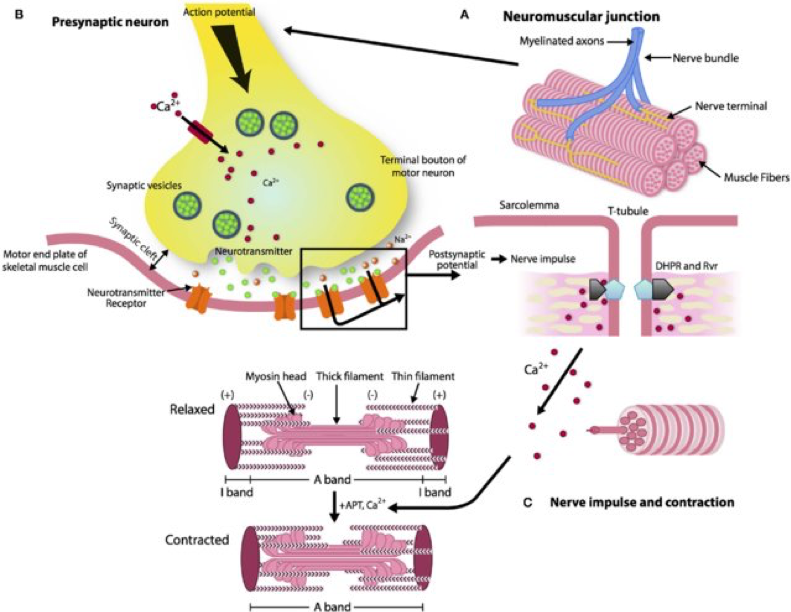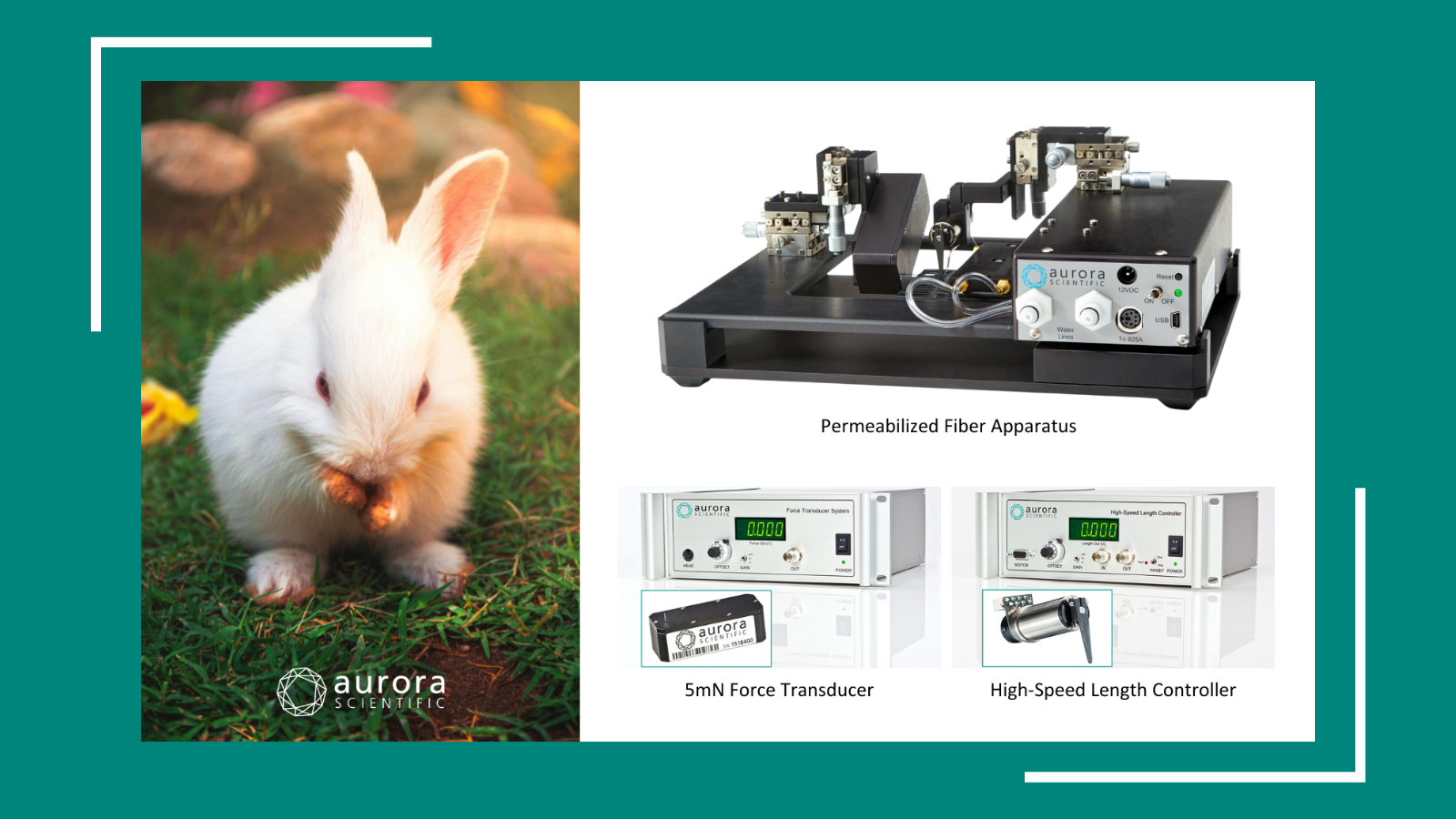For any new or novice user of an Aurora Scientific system, one of the major questions that will always come up is what stimulator settings to use for a particular experiment type. While this will vary for different techniques or experiments, we will always recommend using the constant current (amperage) setting. There are a couple main reasons why we do so, but to understand why constant current is preferred to constant voltage we should try to understand the mechanism behind stimulation during a contractile experiment.
For striated muscle in mammals contraction begins with a signal from the Central Nervous system (CNS). This signal then propagates through branches of the Peripheral Nervous System (PNS) where it finally terminates at the neuromuscular junction (NMJ). Each branch or motor nerve controls a grouping of muscle fibers known as a motor unit. The NMJ has a small separation between the fibers and the nerve itself known as the synapse. The sarcolemma (membrane) of the muscle fibers has a potential voltage as there naturally exists a gradient between the ions which exist on either side of the membrane. Once the contraction signal reaches the synapse, Acetylcholine is released and proceeds to bind to receptors on the motor end plate of the muscle fibers. This induces depolarization of the muscle fiber sarcolemma and will briefly flip the potential of the membrane causing a flux of Calcium ions into the cell. This influx of Calcium drives the contractile processes of the myofilament proteins. (Fig 1)Figure 1: Architecture of the NMJ taken from Gonzalez-Friere et al, Frontiers in Aging Neuroscience, 2014During a typical contractile experiment performed in-vitro, the nerve is not typically left intact so we must simulate this depolarization through other means. Bio-electricity has been studied since the time of Galvani in the 18th century and the electrical fields during a contractile experiment in-vitro have been studied for nearly a century. J Physiol. 1928 Sep 18; 66(1): 49–73. Since that time the most common way of achieving this is to create a pulsed electrical field with a pair of electrodes which span the long axis of the muscle. This can be achieved by pulsing a constant potential (voltage) between the two electrodes or a constant current (amperage). Because it is the flow of electrical current which is generating the electrical field in the solution, we recommend using a constant current in this situation.
One of the most basic physics principles of electricity is Ohm’s law, which states that V (voltage) is equal to the product of I (magnitude of current flow) and R (the resistance, or impedance of the flow of current). V = IR, is essentially at the heart of why we suggest using constant current for in-vitro contractile experiments. Since many of the elements of the experiment itself (the solution recipe, geometry and spacing of the electrodes, size of the bath, etc.) will affect the resistance, the current flow, and thus the magnitude of the field will also be affected. The size of the field required to depolarize all the motor units of the muscle completely will depend on the muscle size and type thus the current required must be found empirically in all cases.
Typically, the magnitude of this current is on the order of several hundred milliamperes. Although many modern stimulators will have sufficient power/current capacity to generate such a field (even if they are constant voltage only) there is a genuine risk that they will saturate before their maximum voltage (due to the relatively high impedance of the solution). Therefore there is a very real risk that the strength of contraction will appear to be a maximum when in reality it is the stimulator itself that is saturated and not all motor units have been fully activated. This risk does not exist with a constant current stimulator.
Constant current stimulation is also very useful when performing contractile measurements in-vivo or in-situ. In these experiments it is typical to stimulate the nerve rather than the muscle directly. Since no field is required and only depolarizing the membrane of the nerve is needed, the current used is far lower than in-vitro (typically < 10mA). However, the ability to control the precise amount of current is imperative as too much current may depolarize the surrounding muscles causing movement artifacts or co-contraction of the antagonist muscles. These artifacts can greatly affect one’s ability to accurately measure contractile force if care is not taken.
While it is entirely possible to perform these contractile experiments using a constant voltage supply, as long as these issues are understood, it is still recommended by Aurora Scientific to use the constant current setting when possible.




